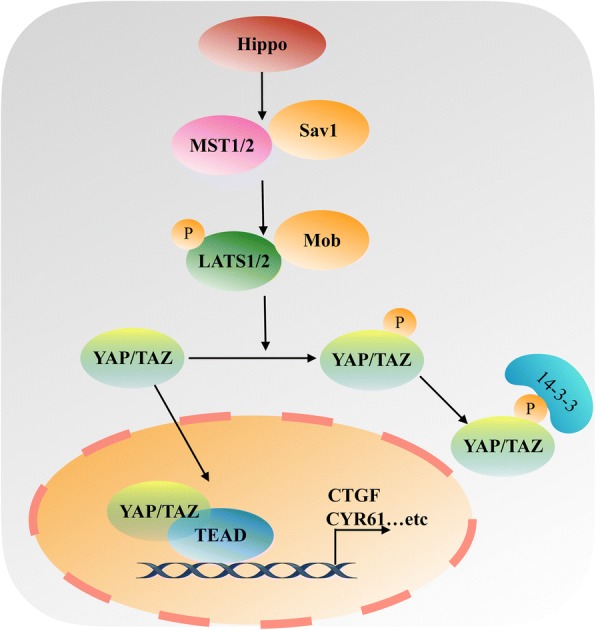Fig. 1.

A simplified illustration of HIPPO signaling pathway. The Hippo signaling pathway is mainly comprised of MST1/2, Sav1, LATS1/2, Mob, YAP and/or its paralog TAZ. When the Hippo pathway is “ON”, MST1/2 phosphorylates and activates LATS1/2, which in turn phosphorylates YAP/TAZ and inhibits YAP/TAZ activity, leading to YAP/TAZ cytoplasmic retention and binding to 14–3-3 proteins or proteasomal degradation. When the Hippo signaling pathway is “OFF”, MSAT1/2 and LATS1/2 are inactivated, the transcriptional coactivators YAP/TAZ cannot be phosphorylated by LATS1/2 and freely translocate to nucleus and bind to TEAD transcription factors, promoting the expression of downstream target genes, such as CTGF and CYR61, which are involved in growth, proliferation, and survival
